A Guide to Paranoia and Autism
Exploring Paranoia in the Autistic Community
Paranoia poses a significant yet under-recognised challenge for many autistic individuals. While commonly attributed to conditions like schizophrenia, emerging research indicates a prevalence of paranoia within the autistic population comparable to levels observed in individuals diagnosed with schizophrenia. This observation signals a need to deepen our understanding of paranoia’s manifestations and implications for autistic individuals.
This comprehensive exploration delves into the mechanisms underlying paranoia in autism, contrasting perspectives between autistic and schizophrenic presentations. Personal narratives highlight unique challenges navigated. The social dynamics exacerbating paranoia are examined, alongside strategies for mitigating detrimental societal factors. A neurodiversity-affirming lens recognises society’s role in better supporting autistic mental wellness through inclusive reform of systems such as education, health and care.
Paranoia: Distinct Autistic and Schizophrenic Perspectives
While paranoid thoughts can disrupt daily life for both autistic and schizophrenic individuals, the underlying mechanisms differ based on each condition’s core traits and symptoms.
For autistic individuals, paranoia stems more from heightened social cynicism grounded in their acute pattern recognition abilities. This enhanced sensitivity to environmental cues, combined with a tendency to predict outcomes for self-protection reasons, can lead to the misinterpretation of benign stimuli as threats. Consequently, feelings of persecution and mistrust may develop.
In contrast, individuals diagnosed with schizophrenia typically struggle more with comprehending social scenarios and cues. Their paranoia arises from the challenges of accurately interpreting interpersonal interactions rather than cynicism towards social systems.
These divergent perspectives indicate paranoia requires customised support approaches catered to individuals’ unique profiles, experiences and coping strategies. Taking a one-size-fits-all approach in a clinical setting runs the risk of glossing over nuanced individual experiences and contributing to feelings of isolation and “otherness” among minority groups.
The Role of Heightened Pattern Recognition as a Coping Mechanism for Autistic People
Autistic individuals frequently develop intricate understanding patterns of their surroundings as a self-preservation coping mechanism in a world they perceive as inherently unpredictable and potentially traumatic. However, this acute pattern recognition ability can become a double-edged sword when it comes to paranoia.
Over-reliance on patterns may lead to the exaggeration or overinterpretation of insignificant environmental cues. Seemingly benign stimuli are anxiously viewed through a suspicious lens and amplified into looming threats against which protective behaviours are employed.
Additionally, social cynicism stemming from societal marginalisation fosters distrust towards systemic intents and norms. When combined with distorted pattern perceptions, an environment ripe for paranoid ideation arises which further jeopardises mental wellness.
Equally problematic is the inclination of some autistic individuals towards “predictive avoidance” preemptively withdrawing from any scenario analysed as potentially stressful regardless of objective risk level. While intended to exert control, this reinforces socially isolated, self-fulfilling prophecies of harm.
Personal Perspectives on Autistic Paranoia
The following reflections contributed by autistic individuals following an online discussion help illuminate paranoia’s unique challenges:
“As an autistic person, I experience paranoia through a lens of societal distrust rather than psychosis. Heightened pattern recognition paired with trauma histories amplify mundane cues into looming dangers against which I must strategise protective behaviours like avoidance and secrecy for perceived ‘self-preservation’.”
“Comorbid autism and schizophrenia exacerbate bizarre delusions for me compared to autistic peers. Converging cognitive styles intensify miscommunications perpetuated as ‘gaslighting’ from which regaining a sense of reality feels virtually impossible without support.”
“Paranoia stems from difficulties independently regulating intense emotions without trusted co-regulation. Within dysregulated households, constantly fluctuating atmospheres undermine establishing feelings of security necessary to counter paranoid ideation spirals.”
These perspectives elucidate paranoia’s socioemotional underpinnings for autistic individuals versus primarily psychotic drivers in conditions like schizophrenia. Recognition valorises lived expertise that enhances clinical understanding.
The Influence of Social Dynamics
Social interactions and dynamics profoundly impact autistic individuals’ experiences of paranoia due to intrinsic traits. For instance, difficulties monitoring one’s internal state without external regulation from trusted individuals heighten vulnerability.
Environments characterised by heightened emotional fluctuations disrupt developing secure attachment foundations on which to establish feelings of inherent safety and security. Without these regulatory capabilities, paranoia escalates amid unpredictable atmospheres.
Systemic inadequacies exacerbating autistic marginalisation also fuel distrust. Dealing with issues in healthcare, education and money due to societal problems increases feelings of division and distrust. This mindset of “us vs them” makes it more likely for paranoid ideas to develop. Long-term stress from systemic inequity can lead one to see themselves and their group as opposed to the systems causing the inequalities.
Addressing socioemotional undercurrents necessitates examining a system’s role in worsening paranoia through perpetuating trauma. Reform prioritising inclusion bolsters resilience against psychological internalisation of perceived ‘othering’ as threatening intents requiring defensive strategies like avoidance, secrecy and over-analysis.
Societal Influences on Autistic Paranoia
Societal forces profoundly impact autistic individuals’ mental wellness, including susceptibility to paranoia. Addressing systemic inadequacies through a neurodiversity-affirming lens mitigates perpetuating marginalisation as threateningly ‘different’.
For instance, improved educational and vocational outcomes inclusive of autistic learning profiles strengthen independence and self-efficacy known to buffer paranoia. Accessible healthcare attentive to psychiatric comorbidities’ intersections bolsters holistic support.
Anti-stigma initiatives coupled with disability-affirming media representation foster belonging crucial for autistic individuals navigating societal interactions anxiously. Legal protections from discrimination safeguard basic human rights and dignity against perceptions as ‘less than’.
Fundamentally, centring autistic voices and lived experiences enables dismantling systems perpetuating the ‘deficit model’ framing. Recognition as a natural human variation empowers autistic autonomy over identities and dismantles obstacles to thriving with paranoia supports tailored appropriately.
Supporting Autistic Individuals With Paranoia
Effectively supporting autistic individuals experiencing paranoia necessitates nuanced, multidisciplinary approaches cognizant of socioemotional underpinnings. Potential evidence-based strategies include:
- Cognitive behavioral therapies can teach alternative pattern interpretation skills and address unhelpful beliefs
- Emotion regulation training alongside applied behavioral analysis strengthened felt sense of control
- Social skills protocols learning cues accurately and building trust through authentic connection
- Family-focused therapy addressing household dynamics and co-regulation strategies
- Peer support programs reducing isolation and bolstering protective factors
- Arts/creativity-based interventions channeling experiences constructively
- Pharmacological aids judiciously as adjuncts solely when clinically indicated
- Systemic advocacy countering societal stigmatisation fueling distrust
Authentically listening to autistic voices enlightens paranoia’s complexity beyond a deficit diagnosis. Valuing neurodiversity dismantles perceptions as ‘other’ fueling the very anxieties therapies then must attempt to address.
Some Frequently Asked Questions about Autism and Paranoia.
What is paranoia and how does it affect autistic people?
Paranoia is a feeling of distrust or suspicion that others are out to harm or plot against you, without any evidence or reason. Paranoia can cause anxiety, fear, anger, or isolation. Autistic people may be more prone to paranoia because of difficulties in understanding social cues, negative social experiences, sensory sensitivities, and anxiety.
How common is paranoia among autistic people?
There is not much research on the prevalence of paranoia among autistic people, but some studies suggest that up to 70% of autistic people may experience paranoid thoughts or feelings at some point in their lives. Paranoia may vary in severity and frequency and may be influenced by stress, trauma, or other factors.
How can paranoia be supported for autistic people?
There is no one-size-fits-all solution for paranoia, but some possible strategies include:
Professional Help:
- Seek assistance from a knowledgeable and respectful therapist, psychiatrist, or mental health provider who understands autism. They can offer tailored interventions.
- Cognitive-behavioral therapy (CBT): This evidence-based approach helps challenge distorted thoughts and beliefs associated with paranoia.
- Medication: In some cases, medication may be prescribed to manage symptoms.
Social Support:
- Build a supportive network of understanding individuals. This can include family, friends, peers, mentors, or online communities.
- Emotional support, validation, feedback, and advice from this network can help you cope with paranoia.
Self-Care and Regulation:
- Stimming: Engage in self-soothing behaviours like stimming (repetitive movements or sounds) to regulate emotions.
- Meditation and Breathing Exercises: These practices can promote relaxation and reduce anxiety.
- Hobbies and Interests: Pursue activities that provide comfort and distraction.
Challenging Paranoid Thoughts:
- Evidence-Seeking: When paranoid thoughts arise, ask for evidence. Are they based on facts or assumptions?
- Alternative Explanations: Consider other explanations for events or situations.
- Focus on Positives: Look for positive aspects to counterbalance negative thoughts.
What are some “Actually Autistic” perspectives on paranoia?
Actually autistic perspectives are the views and experiences of autistic people themselves, rather than those of non-autistic professionals, researchers, or parents. Actually autistic perspectives on paranoia may vary depending on the individual, but some common themes include:
- Paranoia is often a result of being misunderstood, mistreated, or marginalised by society, rather than a personal flaw or defect.
- Paranoia is not always irrational or delusional but is sometimes based on realistic or valid concerns or observations.
- Paranoia can be a coping mechanism or a survival skill, rather than a problem or a disorder.
- Paranoia can be reduced or prevented by creating more inclusive, respectful, and safe environments for autistic people, rather than by trying to change or fix them.
Paranoia and Autism: Conclusion
In closing, paranoia profoundly impacts the quality of life for many autistic individuals yet commonly goes unrecognised or misdiagnosed as a primary condition. Emerging research illuminates prevalence comparable to levels seen in schizophrenia while underscoring distinct sociocognitive mechanisms.
Personal narratives lend invaluable perspectives elucidating paranoia’s socioemotional underpinnings shaped profoundly by systemic forces. Mitigating societal marginalisation perpetuating trauma takes centring autistic lived experiences through inclusive reform across systems like education, health, vocation and legal protections.
With compassionate understanding, autistic individuals experiencing paranoia can access truly affirming mental healthcare and advocacy empowering autonomy over their identities. Thriving lives prove achievable when communities recognise humanity shared across all neurotypes.
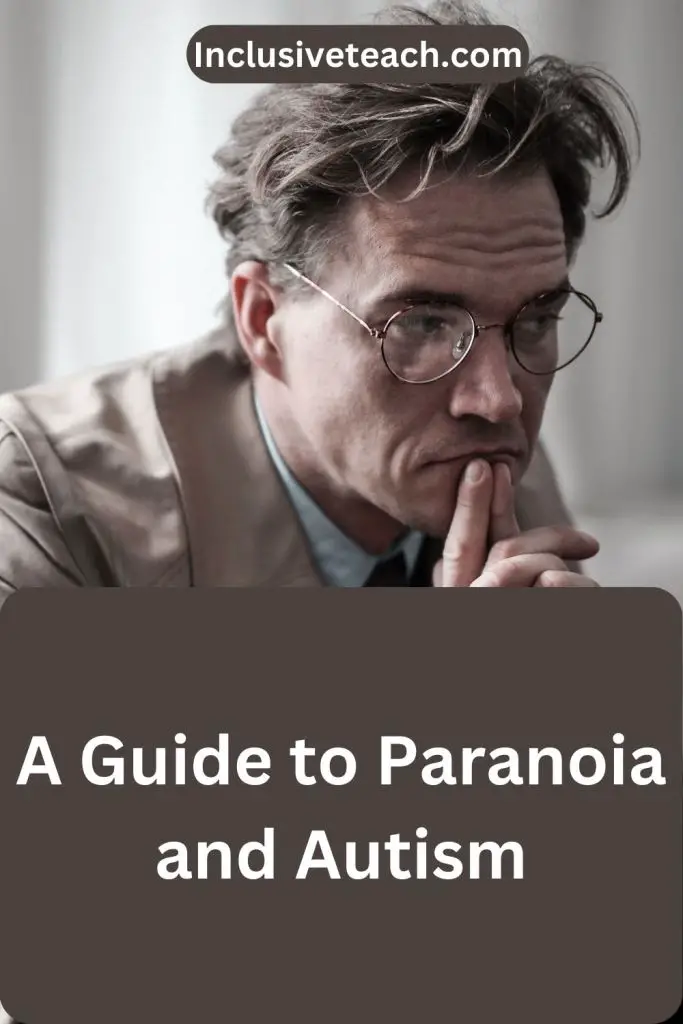
References
Joshi, G., Wozniak, J., Petty, C., Martelon, M. K., Fried, R., Bolfek, A., . . . Biederman, J. (2013). Psychiatric comorbidity and functioning in a clinically referred population of adults with autism spectrum disorders: a comparative study. Journal of Autism and Developmental Disorders, 43(6), 1314-1325.
Spain, Debbie, Sin, Jacqueline and Freeman, Daniel (2016) Conceptualising paranoia in ASD: a systematic review and development of a theoretical framework. Research in Autism Spectrum Disorders, 25. pp. 97-111. ISSN 1750-9467 doi: https://doi.org/10.1016/j.rasd.2016.02.002 Available at https://centaur.reading.ac.uk/71143/
Pinkham, A. E., Sasson, N. J., Beaton, D., Abdi, H., Kohler, C. G., & Penn, D. L. (2012). Qualitatively distinct factors contribute to elevated rates of paranoia in autism and schizophrenia. Journal of Abnormal Psychology, 121(3), 767-777.
Wilson, C. E., Happé, F., Wheelwright, S. J., Ecker, C., Lombardo, M.V., Johnston, P., … Murphy, D. G. M. (2014). The Neuropsychology of Male Adults with High-Functioning Autism or Asperger Syndrome. Autism Research, 7(5), 568-581.
Yan, W. L., Guan, X. Y., Green, E. D., Nicolson, R., Yap, T. K., Zhang, J., … Ginns, E. I. (2000). Childhood-onset schizophrenia/autistic disorder and t(1;7) reciprocal translocation: identification of a BAC contig spanning the translocation breakpoint at 7q21. American Journal of Medical Genetics, 96(6), 749-753.



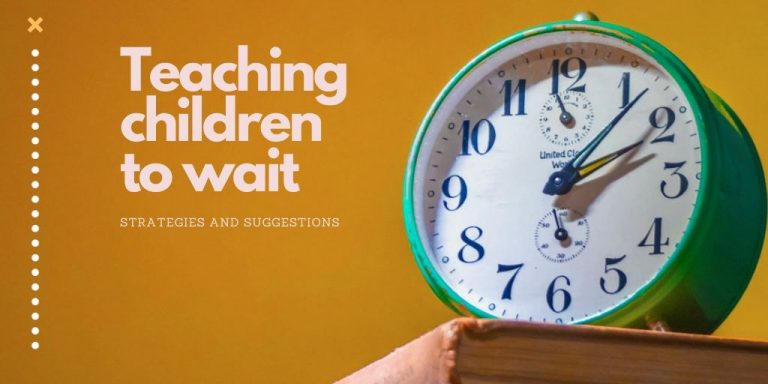
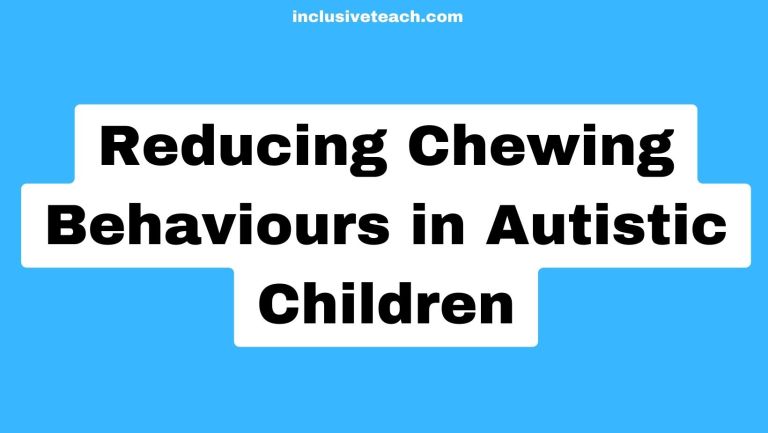
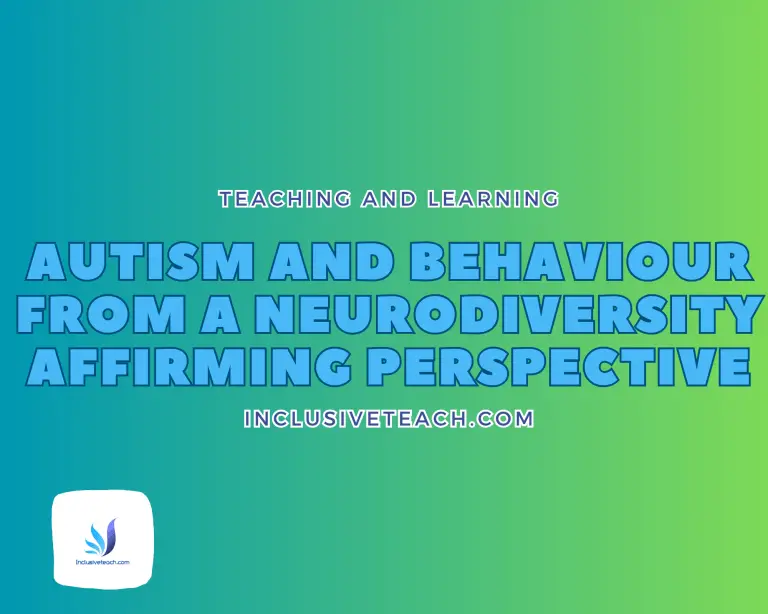
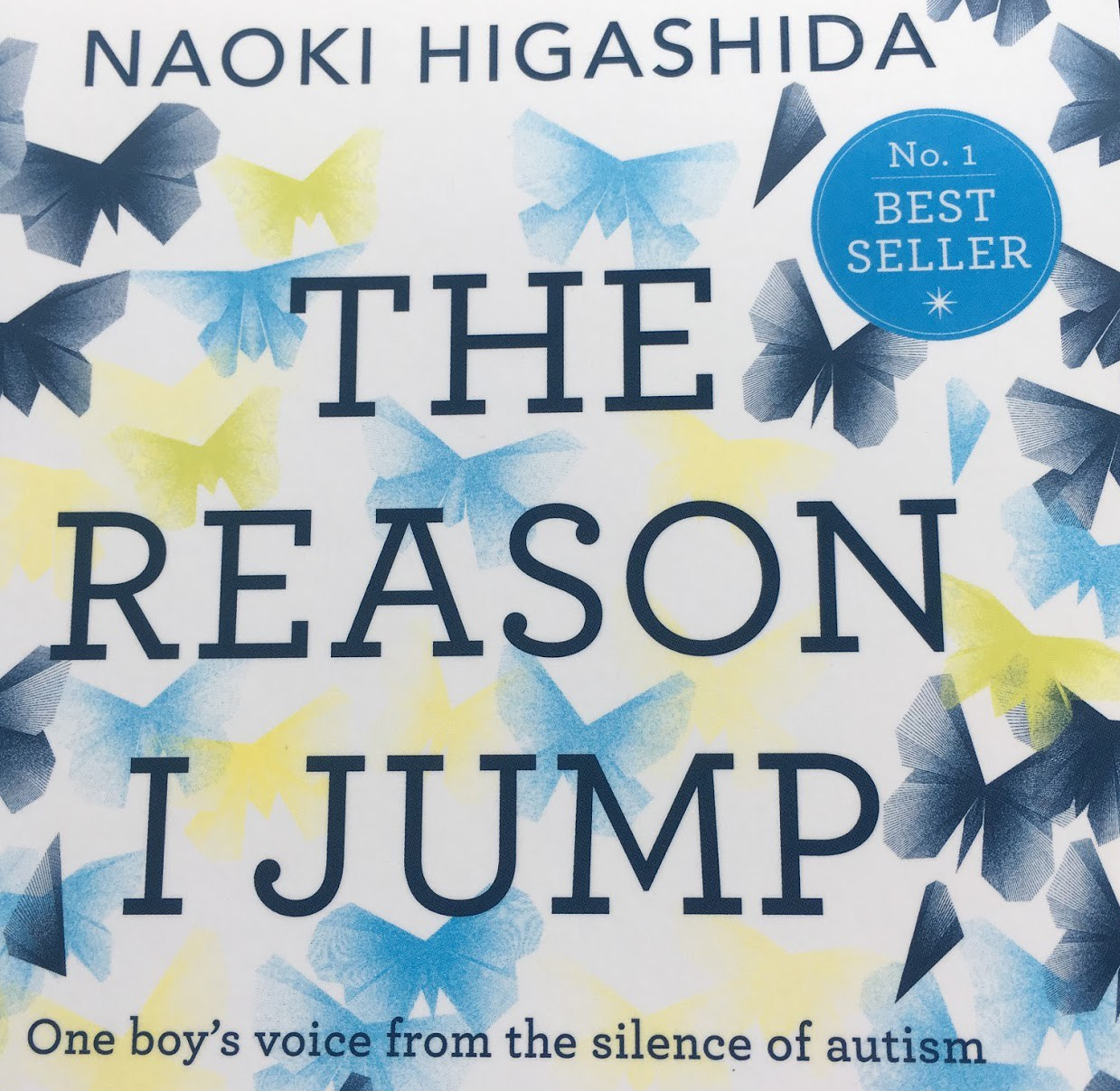
Really interesting! I notice traits in myself about the pattern recognition and perceiving threats, creating a never ending cycle of super awareness of potential threats that I can either think critically about and identify/dismiss as not actually a threat that needs my attention, or I can spiral into paranoia and end up isolating myself further, basically marginalising myself which is often what I thought the threat was in the first place. This happens! I’m very interested to read more on this area of research